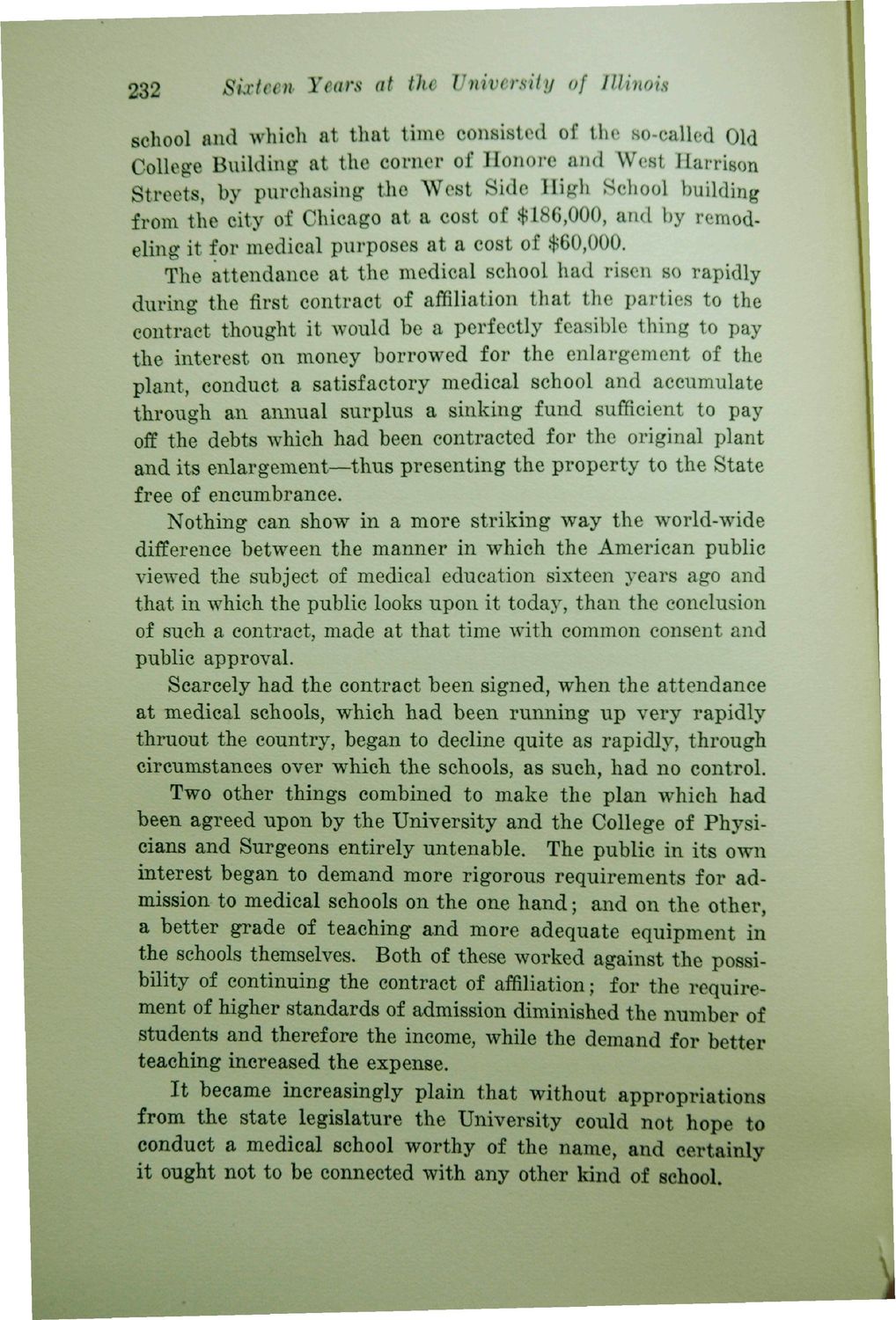| |
| |
Caption: Book - 16 Years (Edmund James)
This is a reduced-resolution page image for fast online browsing.

EXTRACTED TEXT FROM PAGE:
232 Sixteen Years at the University of Illinois school and which at that time consisted of the so-called Old College Building at the corner of Honore and West Harrison Streets, by purchasing the West Side High School building from the city of Chicago at a cost of $186,000, and by remodeling it for medical purposes at a cost of $60,000. The attendance at the medical school had risen so rapidly during the first contract of affiliation that the parties to the contract thought it would be a perfectly feasible thing to pay the interest on money borrowed for the enlargement of the plant, conduct a satisfactory medical school and accumulate through an annual surplus a sinking fund sufficient to pay off the debts which had been contracted for the original plant and its enlargement—thus presenting the property to the State free of encumbrance. Nothing can show in a more striking way the world-wide difference between the manner in which the American public viewed the subject of medical education sixteen years ago and that in which the public looks upon it today, than the conclusion of such a contract, made at that time with common consent and public approval. Scarcely had the contract been signed, when the attendance at medical schools, which had been running up very rapidly thruout the country, began to decline quite as rapidly, through circumstances over which the schools, as such, had no control. Two other things combined to make the plan which had been agreed upon by the University and the College of Physicians and Surgeons entirely untenable. The public in its own interest began to demand more rigorous requirements for admission to medical schools on the one hand; and on the other, a better grade of teaching and more adequate equipment in the schools themselves. Both of these worked against the possibility of continuing the contract of affiliation; for the requirement of higher standards of admission diminished the number of students and therefore the income, while the demand for better teaching increased the expense. It became increasingly plain that without appropriations from the state legislature the University could not hope to conduct a medical school worthy of the name, and certainly it ought not to be connected with any other kind of school.
| |